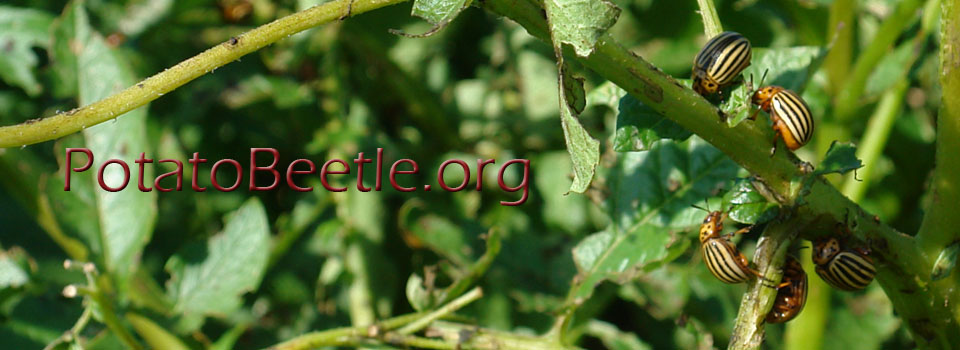Background
Colorado potato beetle has a legendary ability to develop resistance to a wide range of pesticides used for its control. Plants in the family Solanaceae, which are natural food sources for this insect, have high concentrations of rather toxic glycoalkaloids in their foliage. These toxins protect them from a wide range of herbivores. However, the Colorado potato beetles evolved an ability to overcome toxic defenses of its hosts. Apparently, this ability also allows them to adapt to a wide range of human-made poisons. Also, high beetle fecundity (on average, about 600 eggs per female) increases the probability that one of the numerous offspring mutates, just as buying 600 lottery tickets increases probability of getting a winning one compared to buying 6 lottery tickets.
Resistance mechanisms in the Colorado potato beetle are highly diverse even within a relatively narrow geographical area. Furthermore, the beetles show cross-resistance to organophosphates and carbamates, and multiple resistance to organophosphates, carbamates, and pyrethroids. Laboratory selection experiments showed that in addition to the resistance to synthetic insecticides, the beetle has a capability to develop resistance to the Bacillus thuringiensis subsp. tenebrionis delta-endotoxin.
Timeline
The first instance of CPB resistance to synthetic organic pesticides was noted for DDT in 1952. Resistance to dieldrin was reported in 1958, followed by resistance to other chlorinated hydrocarbons. In subsequent years the beetle has developed resistance to numerous organophosphates and carbamates. Presently it is resistant to a wide range of insecticides, including the arsenicals, organochlorines, carbamates, organophosphates, and pyrethroids (Fig. 1). The major problem area is the Northeastern United States; however, resistance has also been detected in other areas of the U.S., as well as in Canada, Europe, and Asia. In some cases, a new insecticide failed after one year (e.g., endrin) or even during the first year of use (e.g., oxamyl).

Fig. 1. Cumulative number of insecticides to which resistance in the Colorado potato beetles has been reported (Arthropod Pesticide Resistance Database, 2007).
Neonicotinoids to the rescue
Resistance problem became completely unmanageable in some areas in the early 1990s, when many potato growers completely ran out of chemical control options. Fortunately, the situation improved after neonicotinoid insecticides entered the market in 1995. A novel mode of action made this class of insecticides an effective tool in controlling the beetles resistant to other chemicals. Long residual activity and low mammalian toxicity provided additional incentive for their wide adoption by commercial growers.
Imidacloprid resistance
Most potato growers apply imidacloprid or thiomethoxam as seed treatment or in
furrow at planting. This maximizes plant coverage and
significantly increases insecticide persistence in potato foliage. Unfortunately, this also creates strong selection pressure on insect populations towards developing resistance
to neonicotinoid compounds. The first cases of field Colorado potato beetle resistance to imidacloprid have already
been reported on Long Island, in Delaware, Maine, and Michigan. In some of the resistant hotspots, imidacloprid no longer
suppresses Colorado potato beetle populations (Fig. 2). There
is no reason to believe that neonicotinoid resistance will not spread throughout presently susceptible beetle populations.

Fig. 2. Damage done by imidacloprid-resistant Colorado potato beetles to an experimental plot treated at planting with in-furrow imidacloprid formulation (Admire). Picture is taken on August 4, 2005.
